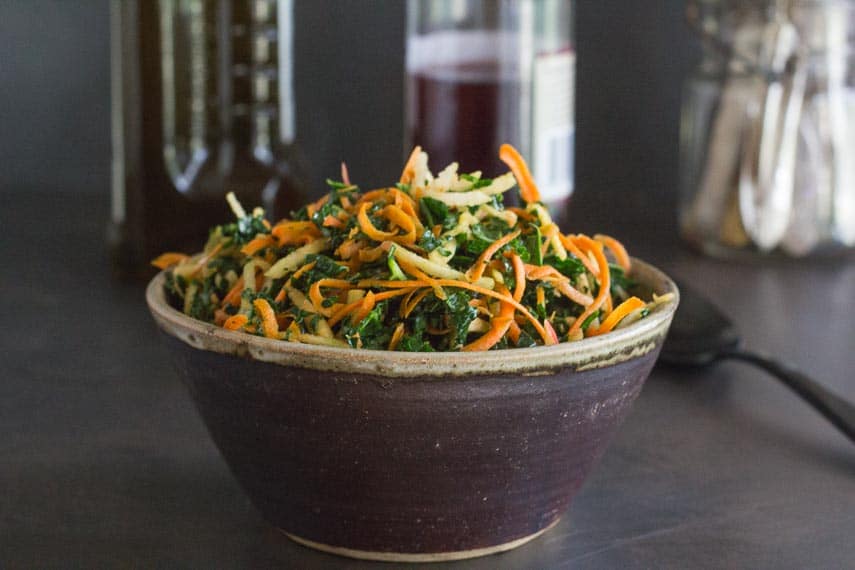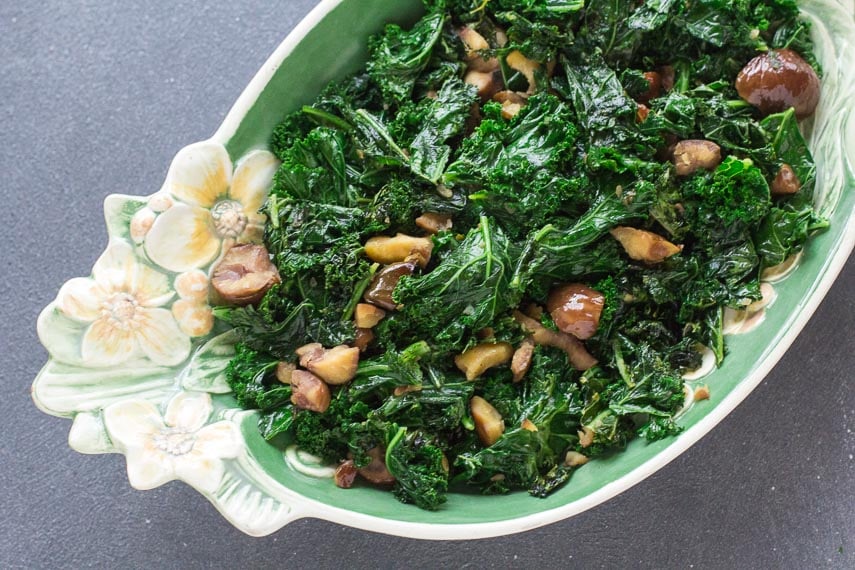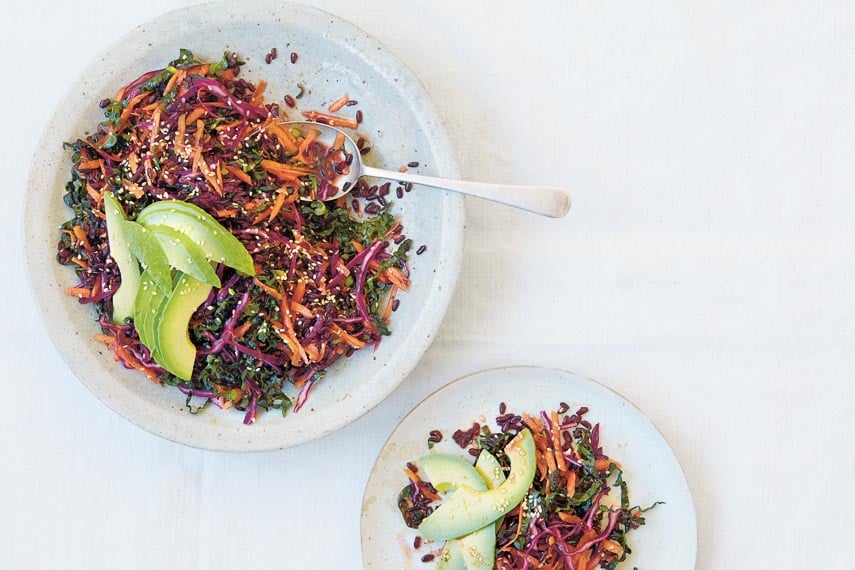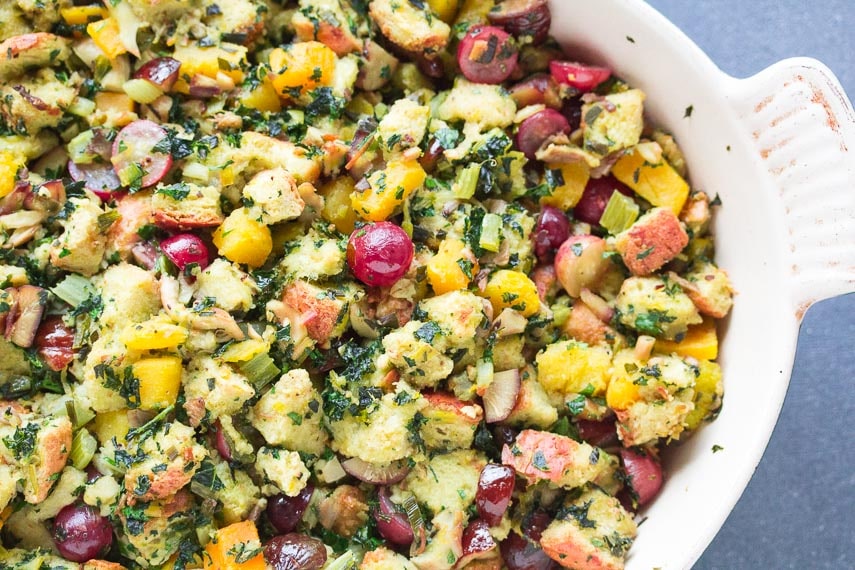Is kale low FODMAP? Yes! Both lacinato kale, also known as Tuscan kale and Dinosaur kale, as well as curly kale have been lab tested and have low FODMAP serving sizes.
Kale has been lab tested by both Monash University and FODMAP Friendly. There are low FODMAP amounts of kale that you can enjoy even during the Elimination Phase.

Kale As Tested By Monash University

Monash University has lab tested Lacinato (Tuscan) kale a few times. Initially their lab tests showed very low FODMAP amounts and the smartphone app entry stated: that “only trace amounts of FODMAPs were detected in this food. Eat freely and according to appetite”. They set a serving at ½ cup, chopped, which they say weighs 75 g.
In an app updated, they changed the language, but not the serving size. In their lab testing Lacinato Tuscan kale does not become Moderate for FODMAPs until 222 g, and High FODMAP at 275 g, at which point GOS appear.
You might want to read our article on FDA serving sizes to understand how serving sizes are set. And get a scale, if you don’t have one already.
Kale As Tested By FODMAP Friendly
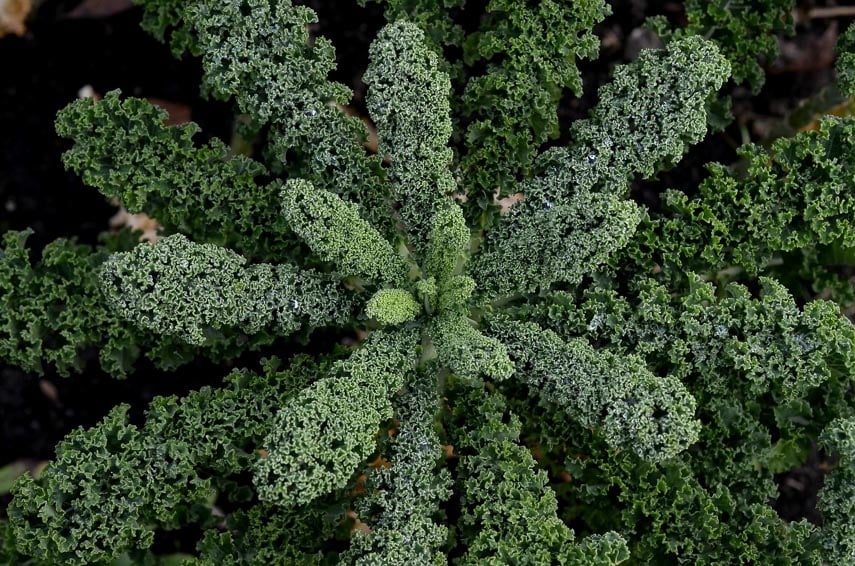
FODMAP Friendly has lab tested curly kale and they give it a “Pass” at ½ cup chopped or 30 g. They use the term “fresh baby kale”, but the image is curly kale and that has been confirmed.
Max low FODMAP serving is 630 g, which is about 10 ½ cups.
They detail that the FODMAPs found in their lab testing are fructans and GOS in very small amounts.
Understanding the Lab Results
As with any product that is a fresh fruit, vegetable or grain, there will be variations in FODMAP content upon lab testing batches. This is to be expected. All of the lab testing performed by Monash University and FODMAP Friendly is accurate. Any of the lab test amounts can be a place for you to begin your exploration of FODMAPs, which will be unique to you.
For more information, please read:
- Monash University Lab Testing Explained
- FODMAP Friendly Lab Testing Explained
- When Low FODMAP Lab Test Results Differ
In this case, we also have to take into consideration the fact that two different kinds of kale were tested.
Both labs produce reliable results; they just represent what was tested at the time.
As for the volume vs. weight difference, it appears that Monash simply chopped their vegetable into smaller pieces, therefore their volume of ½ cup weighs more at 75 g, whereas FODMAP Friendly says the same volume weighs 30 g.
Using weights is the best way to portion out your vegetables when using the apps as reference. This is also what Monash and FODMAP Friendly suggest.
What Is The Difference Between Curly Kale & Lacinato Kale?

Lacinato kale, pictured above, is also referred to as Dinosaur Kale, Tuscan Kale, Cavolo Nero, Black Kale, and even Dragon’s Tongue.
It is very dark green color with flat-ish, elongated leaves that have a bubbled surface.
Its flavor is deep and earthy, yet it is typically less bitter than curly kale.
Curly Kale, seen below, has very ruffly leaves and it tends to be a bit tougher than Lacinato. It is dark green and its flavor can be quite sharp and peppery. It has a bite and some find it bitter.
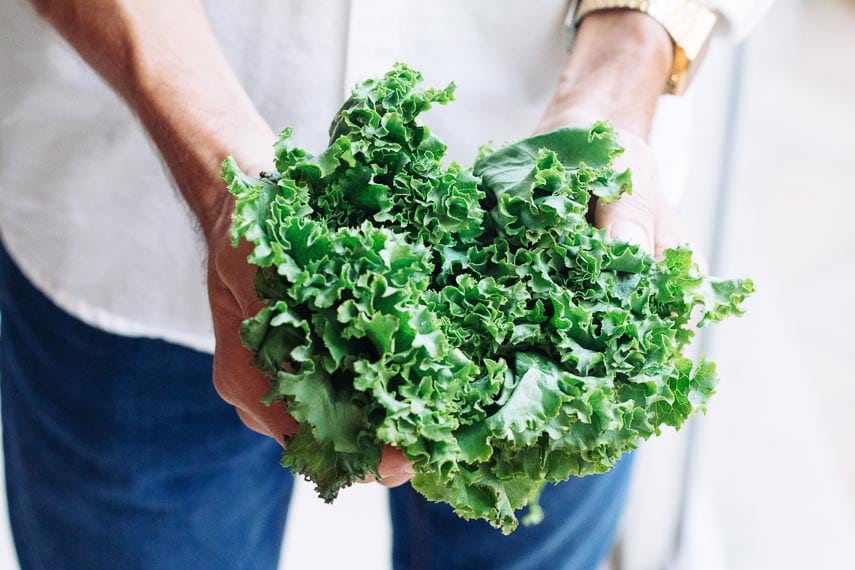
If a recipe just calls for “kale”, use curly kale.
Baby kale is available in many markets and it is simply an immature version, featuring tender leaves and stems. It is usually sold pre-bagged and the leaves will be not much larger than the ones seen below.

Red kale, also called Red Russian Kale or Scarlett Kale, looks similar to curly kale but features red color (sometimes verging on magenta), within the leaves themselves, but most often quite vividly in the stems.
Neither baby kale or red kale have been lab tested for FODMAPs, but you could try it during your Challenge Phase or after and assess your tolerance.
Refer to our article, What If A Food Has Not Been Lab Tested? and also What Is A Low FODMAP Serving Size?
Kale Facts
- Curly Kale is also known as Brassica oleracea var. sabellica.
- Lacinato Kale is also known as Brassica oleracea ‘Lacinato’
- Kale is a member of the Brassica genus, which also includes cabbage, broccoli, cauliflower, turnip, Brussels sprouts and mustard greens.
- It is considered a cruciferous vegetable.
- Kale is considered high in nutrients and low in calories.
- It is a source of vitamins A, K, and C, fiber, manganese, flavonoids and polyphenols
- Kale is so rich in vitamin C that a cup of chopped kale contains more vitamin C than a whole orange.
How To Buy
Kale is available year-round in most markets.
Kale typically comes in bunches. Look for leaves that look hydrated and that have spring to them. Leave any floppy, yellowed, dry or wilted ones on the shelf.
How To Store & Prep
Storing Kale
Storing kale in a loose plastic bag in the coldest part of your refrigerator will keep it somewhat hydrated and fresh but here is the thing with kale. It continues to “look” fine but as it sits it often becomes bitter. Best to use as soon as possible.
Prepping Kale
Baby kale can be eaten as is. All other kale will need some prep.
Wash and dry your kale (we like a salad spinner, or a really absorbent towel), and then you will need to trim away the largest and hardest parts of the stem.
De-Ribing
You might see a recipe asking you to “de-rib” the kale, which simply means removing the stem. You can use a knife or your hands.
To use a knife simply lay a kale leaf flat on your cutting board and use the tip if a sharp knife to cut down along each side of the stem, freeing the leaves. See below:

To do by hand, hold the stem vertically firmly with one hand, stem end facing up. Fold the leaf halves inward towards one another (along their natural fold direction) and grasp the leaves with one hand and rip them down and away from the stem. The leaves should come away from the stem easily, not necessarily in one piece, which is fine. It is an easy process that is hard to describe, but hopefully the image below will help illustrate the technique.

If you are following a recipe that needs whole leaves, then use the knife technique for more control over your leaf shape.
The ribs/stems are usually discarded. (My dog likes to chew on them).

Cutting & Tearing Kale
Most kale recipes will ask for the kale to be cut into bite-sized pieces, fine ribbons or very finely chopped. And then you might have heard about “massaging” kale and we address that below as well.
If a recipe calls for bite sized pieces, I recommend simply tearing with your hands.
To cut fine ribbons, roll one leaf at a time, starting at the stem end and rolling it tightly towards the tip (this is after removing the stem). Then use a sharp chef’s knife to cut it into ribbons crosswise in the width that you desire. You will quickly create many finely cut ribbons and thus is a perfect approach for many salads.
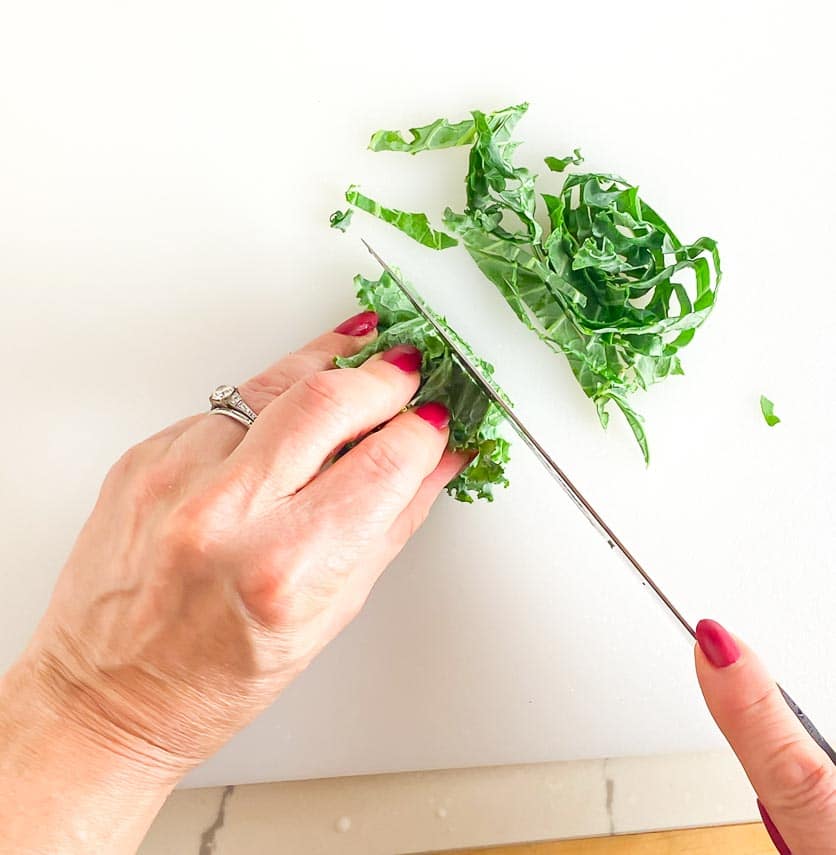
Massaging Kale
You may have heard of massaging kale and wondered what the heck that means. In this case massaging means tenderizing. Fresh, raw kale can be tough. Massaging breaks down some of the cell walls and creates a more tender leaf and eating experience; the kale “sweetens” a bit is taste as well. Massaged kale is typically used for salads or when you need raw kale in a recipe.
To massage kale, simply place your small pieces (torn or ribbons) in a bowl and drizzle with a little olive oil and sprinkle with a little bit of kosher salt. Then get in there with your fingers and massage by rubbing and squeezing the leaves. This technique not only tenderizes the kale, but the flavor can mellow as well. You will know that your kale is “done” when it feels silky and softer.
Use Your Food Processor
There have been a few times in my life when I had to make large quantities of kale salad and massaging was out of the question. I have used my food processor fitted with a metal blade to chop raw kale very finely and have found the result works quite well.
It isn’t exactly the same as massaging by hand, but it breaks down the cell walls and is a technique worth trying.
How To Use
We enjoy kale raw in salads and also cooked. We have several recipes for you.
Kale Recipes
- Garlicky Low FODMAP Sautéed Kale with Chestnuts
- Kale Salad with Butternut Squash & Pomegranate
- Sautéed Spinach & Kale

- Fennel, Kale and Parsley Salad with Clementines & Olives
- Grainy Bread Strata with Kale & Gruyere
- Kale Quinoa Salad with Blueberries and Feta
- Loaded Low FODMAP Vegetarian Stuffing
- Vegetable, Pasta & Bean Soup
- Summer Garden Soup (can be made year-round)
- Loaded Low FODMAP Kale Chips
Be creative and use kale in soups, stews, salads, sautés, stir-fries and made into kale chips. Most recipes that call for spinach or Swiss chard are good bets for substituting kale.
The Takeaway
Kale can be part of your low FODMAP meals, even during Elimination.
While Monash and FODMAP Friendly lab tested different kales, we can see from their findings that both are very low in FODMAPs.
Begin with about ½ cup chopped (between 30 g and 75 g) of either curly or Lacinato kale during Elimination and go from there. As always, eat to your own tolerances.
